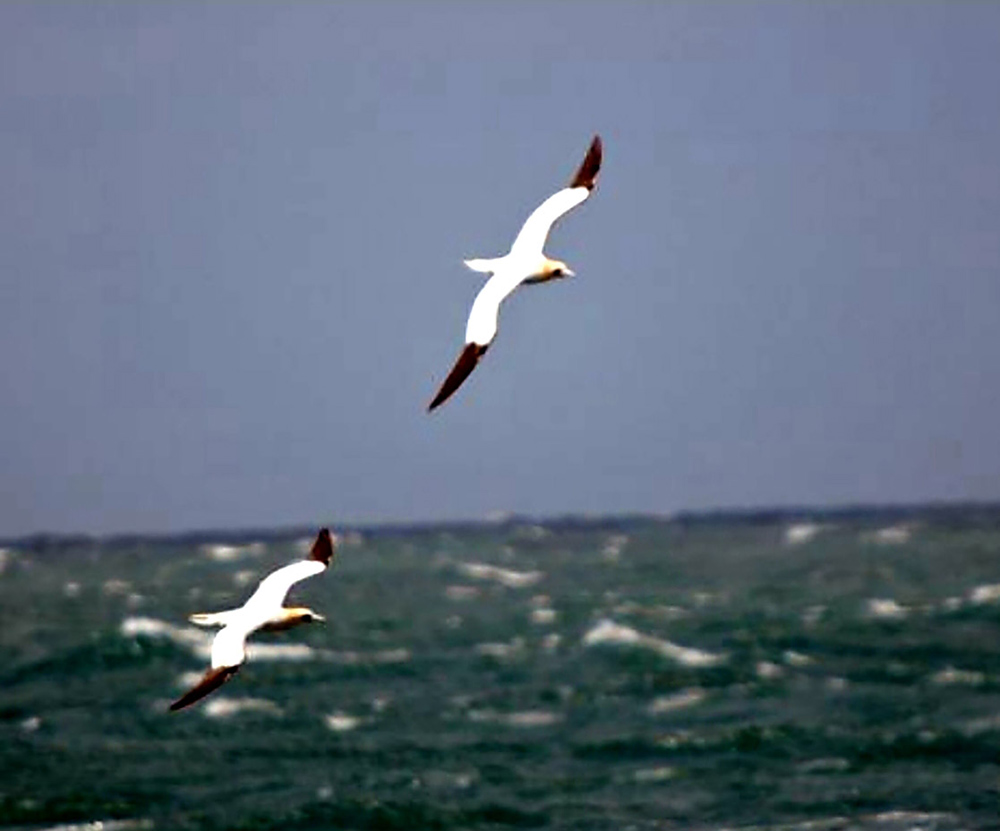By Steffen Klenk
Bird and nature enthusiasts flocked to the Jersey shore this past weekend for a rare and unforgettable sighting. The Northern Gannets made their fly by. These seabirds are only seen briefly along our coastal are during migration season, between late March and early April then again in September. The Cape May Bird Observatory estimates that over 10,000 gannets could be spotted making their trek across the Delaware Bay.
These large seabirds have bright white plumage, distinctive wingtips and a yellow head. They are easy to spot with a good pair of binoculars. Once known as the Solan Goose, Northern Gannets have a wingspan of up to six feet in length and weigh anywhere from five to seven pounds. They can travel at velocities between thirty and forty miles per hour.
Northern Gannets have one of the most spectacular diving techniques. They plunge vertically into the water at speeds up to 60 miles an hour and can swim down 40 to 50 feet. When feeding, they can spot prey from heights of up to 148 feet but typically search anywhere from 30 to 60 feet above sea level.

Roughly 90% of a Northern Gannets’ diet is made up of small fish, but can also feed off of squid, sardines, anchovies, haddock and smelt. Just like seagulls, they will follow the back of fishing boats and, locally, the Cape May-Lewes Ferry in hope of catching any fish in its wake.
While there is a growing population of over 1 million birds, the Northern Gannets remain a protected species in the United Kingdom. Their main predators are the bald white-tailed and golden eagles on land and, at sea, large sharks and seals. The average lifespan of a Northern Gannet is has been known to reach 35 years.
Gannets will nest and breed on sea cliffs and ledges of islands along the Canadian Maritimes, Iceland, the United Kingdom and parts of Sweden. The small rocky islands of Greenland and Spitsbergen, Norway allow suitable breeding conditions for the twenty six weeks needed for brooding. Occasionally, they sleep in protected ledges on the mainland, however their webbed feet makes walking at long distances difficult.
More than 150,000 Northern Gannets make the trek to Bass Rock, a small island on the outer part of Scotland, to breed. North America has six breeding colonies; three are in the Gulf of St. Laurence, Quebec and three just off the coast of Newfoundland.
It is truly enthralling to see these majestic birds in flight.






